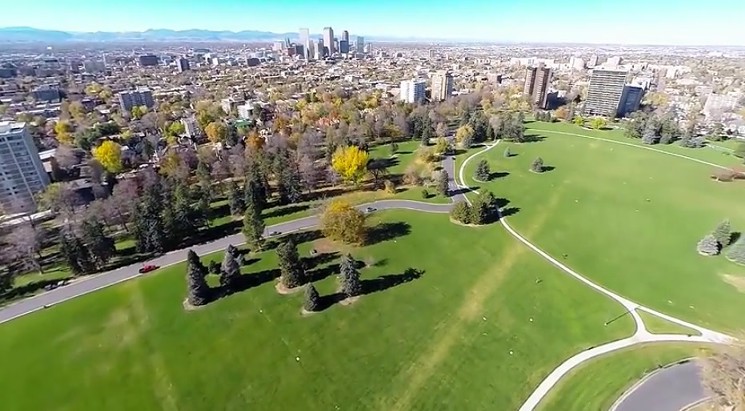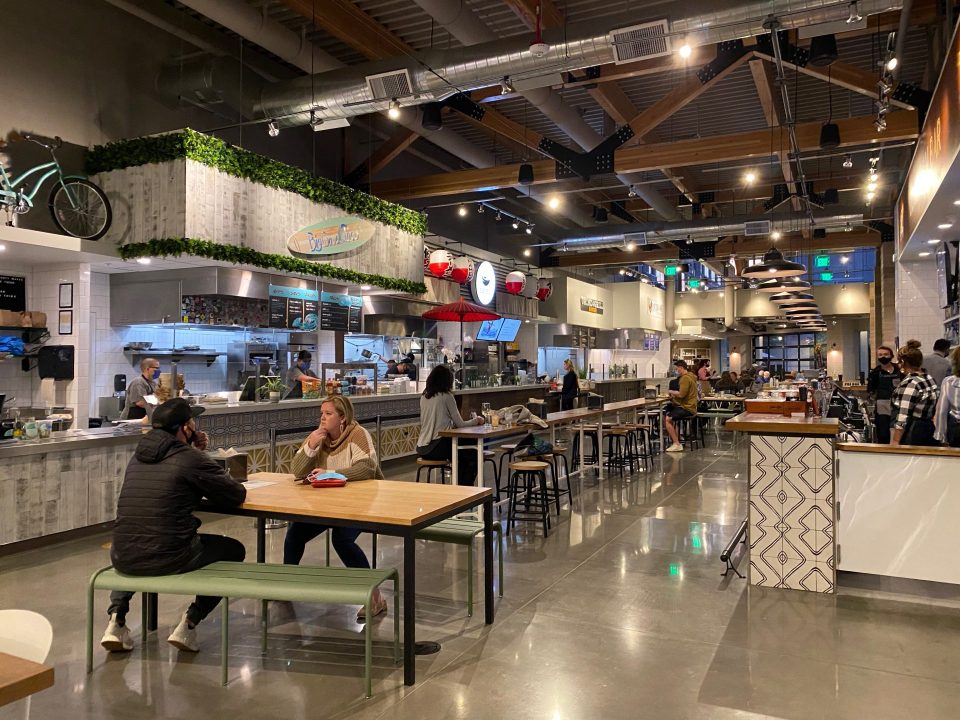The Stories Behind Denver’s Parks & Playgrounds

Denver boasts about 4,000 acres of traditional parks, and, according to the Trust for Public Lands, has the 17th best park system among the country’s 50 most populous cities. Yes, we Denverites are lucky to have open recreational space that is so accessible from nearly any point in the city. Understanding how these parks came to be also provides thrilling insight into Denver’s wild history—so, as a bit of a Denver history buff, I did some research on the subject.
Perhaps the most infamous Denver park story belongs to Cheesman Park, which sits just southeast of downtown near Denver Botanic Gardens. Originally, the land was purchased by the city for use as a cemetery. However, by the late 1880s the area sat in one of Denver’s most popular and exclusive neighborhoods—the grand residences that still border the park are a testament to this fact. Because the cemetery, which had fallen into severe disrepair, had become such an eyesore, Colorado Senator Henry Moore Teller made way for the land to become a park. Families were encouraged to move the bodies of their loved ones, but because the cemetery housed many criminals and beggars, many of the bodies were left untouched. The city hired then an undertaker to remove the rest of the bodies, but he took some unfortunate money-saving shortcuts and was dismissed as a result. The fired undertaker was never replaced—the land was temporarily fenced off, and was eventually transformed into a park with the remaining bodies still interred. Today, the park and its hallmark pavilion are a favorite spot for park-goers, despite its gruesome history.
Other Denver parks have less macabre but equally interesting stories behind their creation. Robinson Park was a brickyard before Robinson Brick donated the land to the city in 1941. Confluence Park, which sits at the confluence of the Cherry Creek and South Platte Rivers, marks the place where gold was first discovered in the Denver area.
Many of Denver’s parks bear marks of the City Beautiful movement, which mayor Robert Speer championed. Frederick Law Olmstead, a landscape architect known for his many famous landmarks (including the U.S. Capitol grounds and New York’s Central Park) designed Civic Center Park and contributed to the design of other parks throughout the city, including Washington Park. Denver’s largest park, City Park, was modeled after New York’s Central Park, and was located in a relatively remote location at the time it was built. Lakes in both Washington Park and City Park were once popular swimming destinations during the summer, and offered ice skating during the winter.
Denver’s park system is still keeping up with our ever changing city, constantly evolving to meet our modern needs—in upcoming years Denverites can expect an innovative new playground on City Park’s west side that will “Re-imagine play”, and an amphitheater in west Denver’s Ruby Hill Park. Ruby Hill Park has also benefited from the addition of a sledding and snowboarding hill in recent years.
With a deeper knowledge of our parks’ histories, we can fully understand how they fit into the fabric of our diverse city, and maybe even enjoy them a little bit more (if this is even possible).
Keep up with plans for our parks at denvergov.org/parksandrecreation.
Gretchen Rosenberg is a Denver real estate broker with The Kentwood Company at Cherry Creek and loves the stories behind Denver’s unique neighborhoods. To view Denver area properties for sale on Gretchen’s web site, visit www.GretchensDenver.com.



